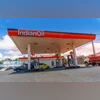To enhance regulatory oversight of retail fuel outlets, the government has implemented a comprehensive monitoring system leveraging cutting-edge technologies, according to a Parliamentary report tabled on Monday.
The monitoring framework integrates advanced technologies including OTP-based calibration, magnetic self-destructive pulsers, and digital payment systems, enabling real-time data analytics across the country's fuel distribution network.
The action taken report by the standing committee on consumer affairs, food and public distribution revealed that the monitoring system has been expanded nationwide, with special emphasis on high-risk areas.
The regulatory mechanism, developed under the Legal Metrology Act, 2009 and Legal Metrology (General) Rules, 2011, provides a robust oversight framework.
"By adhering to the provisions of the Act and leveraging modern monitoring tools, the government aims to enhance regulatory oversight, protect consumer interests, and foster a fair and transparent marketplace across all retail outlets nationwide," the report said.
The monitoring is conducted jointly by Legal Metrology departments and Oil Marketing Companies (OMCs) at both state and central government levels.
More From This Section
The initiative follows recommendations from the parliamentary standing committee to establish a time-bound plan for comprehensive monitoring of retail fuel outlets. Regular assessments will track milestones, identify challenges, and implement corrective measures.
The technologies deployed include advanced digital tracking mechanisms that ensure precision in fuel dispensing, data integrity, and real-time monitoring of transactions across retail fuel stations.
(Only the headline and picture of this report may have been reworked by the Business Standard staff; the rest of the content is auto-generated from a syndicated feed.)

)